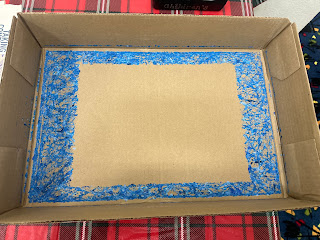https://www.steampoweredfamily.com/groundhog-day-kids-stem-activity/
The
History of Groundhog Day
Groundhog Day is celebrated on February 2,
which is known as Candlemas in the church. Candlemas falls
halfway between Winter Solstice and Spring Equinox and has
a long history of importance in many cultures throughout Europe and was brought
to North American in the 1800’s by the Germans.
In
Scotland, there was an old saying that:
“If Candlemas Day is
bright and clear, there’ll be twa (two) winters in the year.”
And
in England there is an old song.
“If Candlemas be fair
and bright, come, winter, have another flight. If Candlemas brings clouds and
rain, go winter, and come not again.”
Looking to hibernating animals
to help understand the yearly variations in seasonal patterns is a tradition
that dates back thousands of years in Europe. They believed that badgers had
the ability to predict changes in the seasons. This was important, as farmers
needed to know when to plant their crops.
So they carefully watched on
February 2nd to see what would happen when the badger poked his head up out of
his hole in the ground. If he saw his shadow, he will return to his burrow and
there will be 6 more weeks of winter weather. We will have a second winter. If
he doesn’t see his shadow, then spring is on it’s way.
Supplies
Soda
pop bottles
Balloons
Markers (I use Sharpies and love them!)
Chip Bag Clips
Vinegar
Baking Soda (sodium bicarbonate)
Funnels
Variety of measuring spoons
Measuring cup
Light – could be a table lamp or flashlight
Directions
This is a fantastic
STEM activity to do as part of your Groundhog Day Celebration.
Prep
The first step is to
set up your space. You will want to be near a wall so you can aim the light at
the bottles to create the shadows. The light is your sun!
Clean and rinse your
bottles and remove any labels so you can see the reaction.
For our experiment we
decided to keep our vinegar as the constant and our baking
soda as our variable. We chose three variable amounts, which means we
needed three balloons or ground hogs. You can make as many variables as you
want.
Decorate Balloons
Blow up the balloons
and clamp the end so the air doesn’t escape. Using markers draw on the balloons
to create your groundhog faces. Let kids go crazy and be creative with this.
There are no rules. Even which animal was used on this day has varied over
history and location, so encourage kids to be creative with their balloons.
Once they are done
decorating their balloons, let them deflate and set them near the bottle.
Decide on how much you
are going to alter your variable. We decided to use 1/4 teaspoon in the first
bottle, 1/2 teaspoon in the second bottle, and 1/2 tablespoon in the third. For
our constant we used 1/4 cup of vinegar.
Take a moment to
discuss your student’s hypothesis.
Set Up the Experiment
·
Add 1/4 cup of vinegar
to each bottle (use a funnel to limit mess).
·
Next we need to
prepare the balloons.
In
one balloon use a funnel to add 1/4 teaspoon of baking soda then carefully slip
the balloon over the top of the bottle. Don’t let any of the baking soda fall
into the bottle yet! Repeat for each bottle. Adjusting the amount of baking
soda in each balloon.
Reaction Time!
Once you are ready,
flip up your balloons and shake them so the baking soda falls into the bottle
and triggers the reaction!
Now examine your
balloons and see how they vary. Don’t forget to examine the shadows on the
wall! Did your groundhogs see their shadows? How are the silhouettes different?
The
Science Lessons
Like many of our favorite
chemistry experiments, this is a simple vinegar (acid) and baking soda (base)
reaction. When the two are
mixed they release CO2 gas which rises and takes up space. This is what causes
the balloon to blow up. When you alter the amount of baking soda added to the
bottle, it affects how much CO2 is released and therefore how much the balloon
blows up.






















































